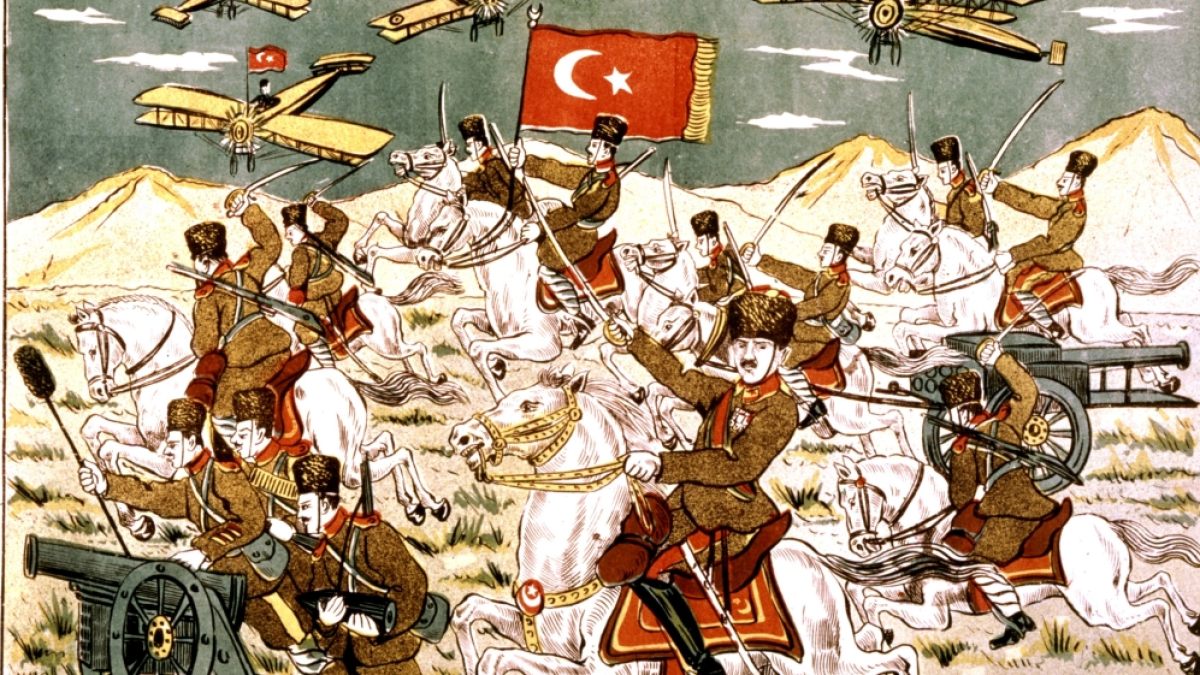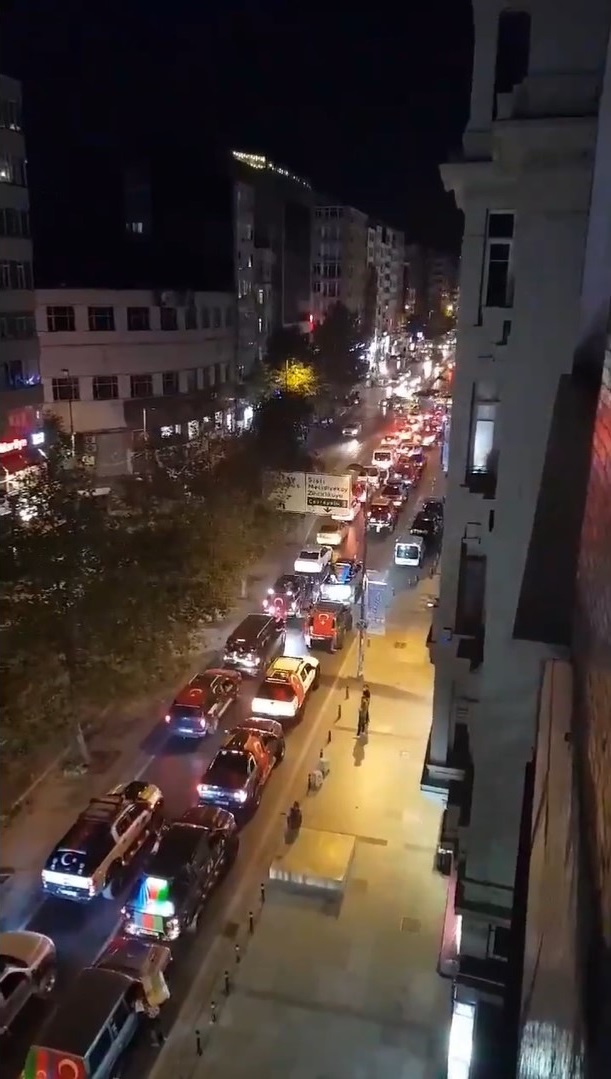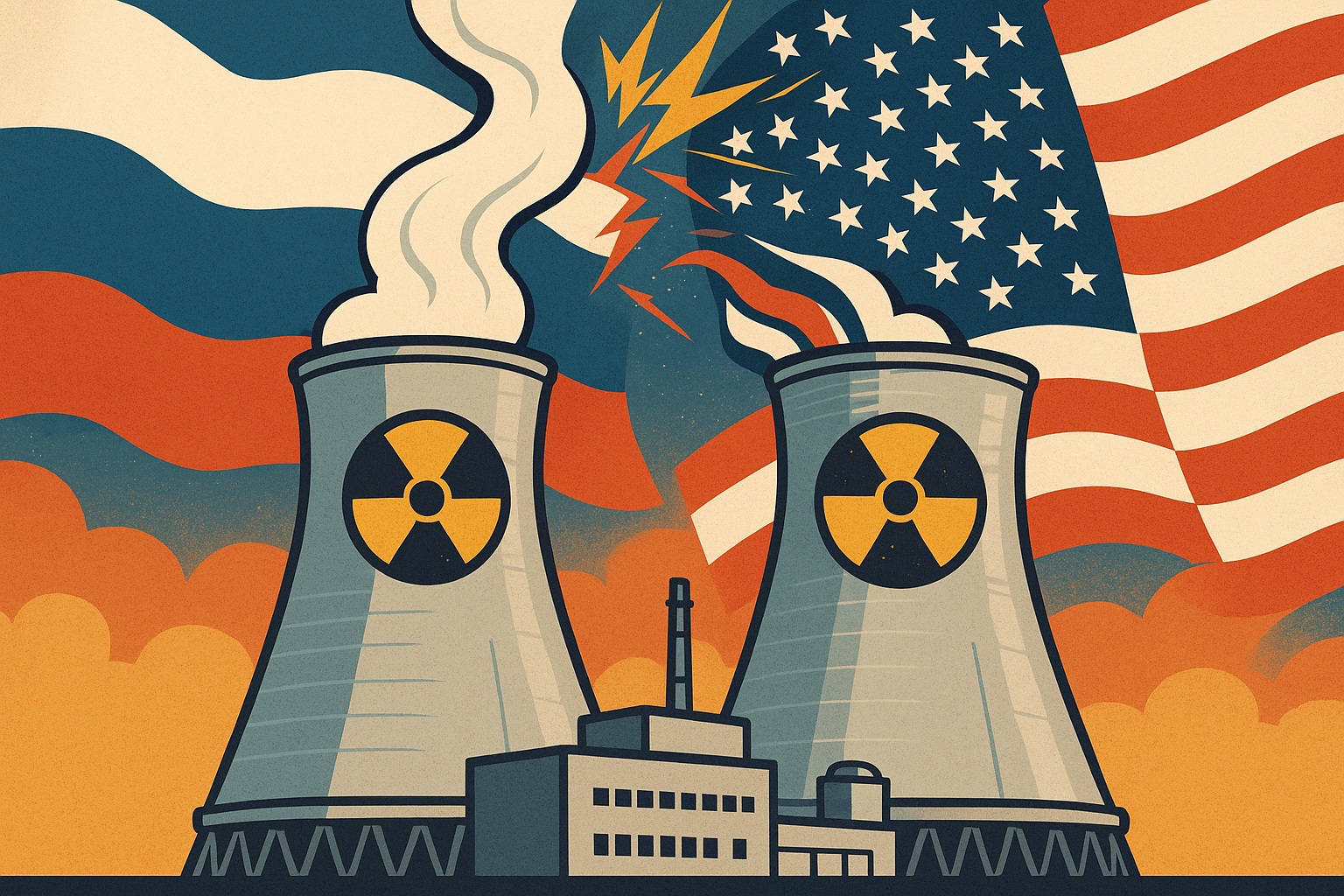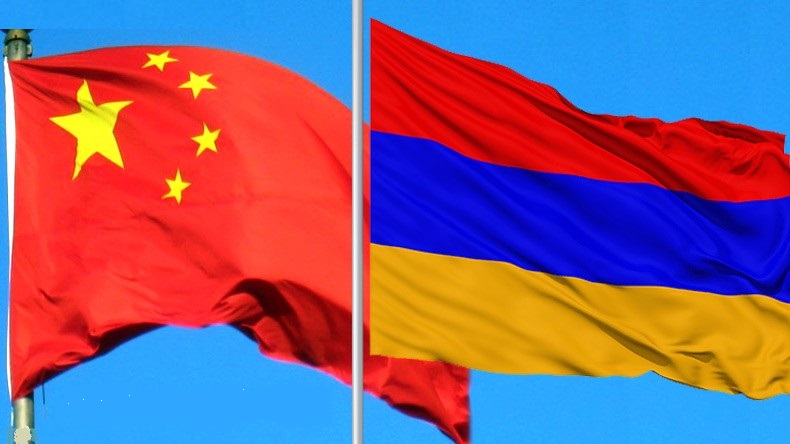
Today, April 24th, as the late Hrant Dink said, is the day after April 23rd, “a very important bright day in the history of a nation that has emerged from painful decades.” April 24th is the day after the only holiday dedicated to the children of the world. It is one of the days that talked about the most in the world. It is also a day when politicians worsen the pain of those who are really suffering.
April 24th is actually a day that is misunderstood worldwide. The exact date referred to is April 24th, 1915. The geography associated relevant to that date is the region that encompassed the borders of the Ottoman state. It is an artificial date created by ignoring the circumstances of a country struggling to protect its territory during World War I and only has the motive of blame and attrition. The Ottoman lands were the lands that experienced the most bloodshed. In reality, what happened on April 24th, 1915, in the lands where the war was most intense/occurred most intensely? For example, did the state decide overnight to exterminate all Armenians within its territory? Or did it act in a systematic manner, displacing them from their homes and preventing them from ever returning? Given the difficult economic conditions of the Ottoman state, how could a state in such a situation have “systematically” planned to exterminate an ethnic population? What was the actual situation in Anatolia in sum? Those who believe that “1.5 million Armenians” were decided to be exterminated overnight will of course not be curious about the answers to these questions. Those who are genuinely curious about these questions can be considered as “those who prefer to stay away from racist discourse regarding the torment of those who have actually suffered.”
Armenian Prime Minister Nikol Pashinyan is one of among those who question the actual number of Armenians who were subjected to the so-called genocide. Eduard Sharmazanov, one of the former leaders of Armenia representing the Republican Party, criticized Pashinyan and accused him of acting like Türkiye. He accused Pashinyan’s government of “following orders” coming from Türkiye “to bury the Armenian genocide in history”[1] before the commemoration day. There is a point that is overlooked here. Apart from the actual number of 1.5 million, the point is regarding the existence of official archival documents. Such an archival document is important. Archival documents and official records are sources that historians, legal experts and researchers should consult. Otherwise, if one relies on the existence of “memories” in the absence of any source, one would be moving away from the truth. Hence, we can continue with an example that demonstrates the importance of archives. There were more than forty uprisings in Eastern Anatolia between 1882 and 1909 as a result of the provocation of Tsarist Russia. These uprisings indicated a state security problem. During this period, there were also the Kumkapı Rally in 1890, the Ottoman Bank Raid in 1896 and the Yildiz assassination attempt of Abdulhamid II in 1905. As a result of these attacks, many people were killed and the perception of security was severely influenced. The incidents were this severe. If the date ranges are taken into account, the influence of Tsarist Russia on the Armenians in Eastern Anatolia after the Treaty of Berlin in 1878 will be even more evident.
It would be accurate to say that the Ottoman Empire was no longer able to efficiently establish security and was forced to take part in the First World War after this period when the uprisings and attacks started to increase. The number of people massacred in Eastern Anatolia as a result of the attacks of Armenian gangs armed by the Russians is 518,105[2]. This number is archival information counted name by name.
As for April 24th, 1915, it is possible to say that two issues that need to be paid attention to have been mixed up. It should be emphasized that April 24th and the Law on Relocation and Resettlement, which entered into force on May 27th, are different from each other. Although the date was memorized as “April 24th”, it was observed that Armenian separatist gangs and their supporters were preparing for an all-out revolt, despite numerous warnings given towards them. Upon this, the Commander-in-Chief of the Ottoman Army instructed the military units on February 27th, 1915 to seize weapons, bombs and encrypted documents from the warehouses of the Armenian gangs. It was understood that these munitions were indicative of a revolutionary preparation, and for this reason, Armenian soldiers in the army should not be placed in armed services and precautions should be taken. It was also ordered not to harm those among the Armenians who were loyal to the state[3]. After the defeat of the Ottoman armies against Russia in Eastern Anatolia, the Armenian gangs intensified their activities in parallel with the start of the Çanakkale War and the threat to Istanbul. During this period, attacks and massacres against Muslims in Eastern Anatolia increased. The measures taken did not yield results and the committees that armed the Armenians and triggered the rebellions were shut down and the ringleaders were arrested. In response to these developments, the Ministry of Internal Affairs sent a circular to 14 provinces and 10 districts on April 24th, 1915. The circular ordered the closure of Hunchak, Dashnak and other Armenian committees, the confiscation of their correspondence and documents, and the arrest of Armenians whose harmful activities were known. A noteworthy article of the Circular is the prevention of clashes between Muslims and Armenians in Bitlis, Erzurum, Sivas, Adana and Marash[4].
With the May 27th 1915 Law on Relocation and Resettlement, it was decided that only Armenians in the war zone and along the supply routes would be subject to relocation and resettlement, and the three major provinces of Istanbul, Edirne and Izmir were excluded from the law. While the Relocation and Resettlement Law was in effect, the mistreatment of some local administrators was documented. In 1916, 1647 people were brought to court, 500 were imprisoned, 60 were sentenced to heavy imprisonment and 67 were sentenced to death[5]. Armenian ultra-nationalist, terrorist gangs were responsible for the deaths in Eastern Anatolia. Armenians were also among those they killed. In 1923, the Prime Minister of Armenia, Hovhannes Katchaznouni, also mentioned that the Armenian gangs were wrong and stated that the Ottoman State’s decision of relocation and resettlement was the right decision[6]. Therefore, the destruction of peace and the culture of coexistence in Anatolian lands is a result of the harmful activities of these gangs. Thus, those who try to make us forget the actual date of April 24th and those who defend the activities of Armenian gangs should apologize for the treachery of these gangs. Only in this way will it be possible to talk about mutual reconciliation.
Returning to Sharmazanov’s criticism of Pashinyan, he explicitly refers to April 24th as a “political force.” Here, it seems to be a natural reaction of a politician to approach events as it he sees fit. It is questionable to what extent Armenians, Turks or people of other ethnicities who have actually suffered are relevant to him. Sharmazanov said, “How will Pashinyan justify in front of the Armenian people his failure to make April 24 an important foreign policy factor? He will say that this is a threat posed by historical Armenia.” The word “threat” also needs to be analyzed. There are two meanings of “threat” here. One is the possibility of losing the ability to identify “enemies” and the other is the “risk” of losing the power of the influence of their “identity” through the so-called “genocide.” Both are political concerns. Therefore, the Armenian people, before anyone else, should pay attention to and research the fact that April 24th is a “fabricated history.” Every unresearched, narrativized “pain” deeply wounds those who have experienced real “pain.”
With this article, which begins with a reference to the article titled “April 23.5” written by Hrant Dink in the AGOS newspaper on April 23rd, 1996, we aim to correct the misconception about the date “April 24th”. First of all, we commemorate Hrant Dink with respect. Dink was a respected thinker who emphasized the need to improve Turkish-Armenian relations and said that this was an issue that could only be resolved among ourselves and not by foreign powers. His words are important for Türkiye and remain valid. His murder was both an attack on freedom of thought and a despicable attempt to prevent efforts to improve Turkish-Armenian relations. Hrant Dink’s article, reprinted in the latest issue of AGOS[7], reads “They are taken away... And they never came back.” shows that even Dink had a historical fallacy. As we have presented above with sources, almost all of those arrested on April 24th were released and returned, some during the war, some after the Armistice of Mudros. We find it useful to emphasize this important point. The problem is not only the 1915 incident. There were mutual massacres during the First World War. It is not correct to deal with the war years in a one-dimensional, single-angled manner, based on memories. Armenian gangs engaged in ethnic cleansing, first with the support of Tsarist Russia, and afterwards with the support of Western allies. As Hrant Dink states in his article, “existing grudges are an obstacle[8].” The important thing is not to reinforce these and similar obstacles with a fabricated date such as “April 24th”; not to worsen the suffering of innocent people who were massacred in Eastern Anatolia regardless of their ethnic origin in order to make politics.
*Image: https://www.aljazeera.com/opinions/2018/11/10/remembering-world-war-i-in-the-middle-east
[1] “Pashinyan Ally Advocates ‘Verification’ of Armenian Genocide Victims,” The Armenian Mirror Spectator, mirrorspectator.com, 16 April 2024, https://mirrorspectator.com/2024/04/16/pashinyan-ally-advocates-verification-of-armenian-genocide-victims/.
[2] Ermeniler Tarafından Yapılan Katliam Belgeleri (1914-1921), II. Cilt, Başbakanlık Arşivler Genel Müdürlüğü Yayınları, Ankara, 2001.
[3] Askeri Tarih Belgeleri Dergisi, Belge No. 1999
[4] Yusuf Sarınay, “What Happened on 24 April 1915?,” Marmara University, Marmara.edu.tr, Accessed: 23 April 2024, https://turksandarmenians.marmara.edu.tr/en/what-happened-on-24-april-1915/.
[5] Yusuf Sarınay, “What Happened on 24 April 1915?”.
[6] Ovanes Kaçaznuni, “Taşnak Partisinin Yapacağı Bir Şey Yok,” February 2020, Kaynak Yayınları
[7] 19 Nisan 2024, AGOS.
[8] 19 Nisan 2024, AGOS.
© 2009-2025 Center for Eurasian Studies (AVİM) All Rights Reserved
No comments yet.
-
 24 APRIL AND RACIST ARMENIAN TERRORIST SASSOUNIAN'S PAROLE IS BEFORE THE CALIFORNIA GOVERNOR NEWSOM ONCE AGAIN
24 APRIL AND RACIST ARMENIAN TERRORIST SASSOUNIAN'S PAROLE IS BEFORE THE CALIFORNIA GOVERNOR NEWSOM ONCE AGAIN
Hazel ÇAĞAN ELBİR 28.04.2020 -
 THE MANAGEMENT BLUNDERS IN THE EU
THE MANAGEMENT BLUNDERS IN THE EU
Hazel ÇAĞAN ELBİR 11.03.2021 -
 TURKISH-AMERICAN RELATIONS LOST A HISTORICAL OPPORTUNITY
TURKISH-AMERICAN RELATIONS LOST A HISTORICAL OPPORTUNITY
Hazel ÇAĞAN ELBİR 17.11.2022 -
 APRIL 24 AND THE IGNORED FIRST WORLD WAR
APRIL 24 AND THE IGNORED FIRST WORLD WAR
Hazel ÇAĞAN ELBİR 30.04.2024 -
 ARMENIAN TERRORISM BEGINS TO SHOW ITS FACE AGAIN - 2
ARMENIAN TERRORISM BEGINS TO SHOW ITS FACE AGAIN - 2
Hazel ÇAĞAN ELBİR 15.03.2021
-
 2016 SPECA ECONOMIC FORUM - REPORT
2016 SPECA ECONOMIC FORUM - REPORT
AVİM 12.12.2016 -
 THE FOREIGN POLICY SHIFT IN ARMENIA, BORDER DISPUTES AND THE WESTERN POWERS’ RETURN TO THE REGION
THE FOREIGN POLICY SHIFT IN ARMENIA, BORDER DISPUTES AND THE WESTERN POWERS’ RETURN TO THE REGION
Tutku DİLAVER 04.11.2022 -
 FRANCE 24-THE OBSERVERS PROGRAMME AND FAKE NEWS
FRANCE 24-THE OBSERVERS PROGRAMME AND FAKE NEWS
Mehmet Oğuzhan TULUN 20.10.2020 -
 ARMENIA’S NUCLEAR DILEMMA: CAUGHT BETWEEN RUSSIA AND THE WEST
ARMENIA’S NUCLEAR DILEMMA: CAUGHT BETWEEN RUSSIA AND THE WEST
Bekir Caner ŞAFAK 12.11.2025 -
 THE DURABILITY OF SILK IN MOUNTAINS OF CAUCASUS: CHINA AND ARMENIA
THE DURABILITY OF SILK IN MOUNTAINS OF CAUCASUS: CHINA AND ARMENIA
Teoman Ertuğrul TULUN 13.09.2017
-
25.01.2016
THE ARMENIAN QUESTION - BASIC KNOWLEDGE AND DOCUMENTATION -
12.06.2024
THE TRUTH WILL OUT -
27.03.2023
RADİKAL ERMENİ UNSURLARCA GERÇEKLEŞTİRİLEN MEZALİMLER VE VANDALİZM -
17.03.2023
PATRIOTISM PERVERTED -
23.02.2023
MEN ARE LIKE THAT -
03.02.2023
BAKÜ-TİFLİS-CEYHAN BORU HATTININ YAŞANAN TARİHİ -
16.12.2022
INTERNATIONAL SCHOLARS ON THE EVENTS OF 1915 -
07.12.2022
FAKE PHOTOS AND THE ARMENIAN PROPAGANDA -
07.12.2022
ERMENİ PROPAGANDASI VE SAHTE RESİMLER -
01.01.2022
A Letter From Japan - Strategically Mum: The Silence of the Armenians -
01.01.2022
Japonya'dan Bir Mektup - Stratejik Suskunluk: Ermenilerin Sessizliği -
03.06.2020
Anastas Mikoyan: Confessions of an Armenian Bolshevik -
08.04.2020
Sovyet Sonrası Ukrayna’da Devlet, Toplum ve Siyaset - Değişen Dinamikler, Dönüşen Kimlikler -
12.06.2018
Ermeni Sorunuyla İlgili İngiliz Belgeleri (1912-1923) - British Documents on Armenian Question (1912-1923) -
02.12.2016
Turkish-Russian Academics: A Historical Study on the Caucasus -
01.07.2016
Gürcistan'daki Müslüman Topluluklar: Azınlık Hakları, Kimlik, Siyaset -
10.03.2016
Armenian Diaspora: Diaspora, State and the Imagination of the Republic of Armenia -
24.01.2016
ERMENİ SORUNU - TEMEL BİLGİ VE BELGELER (2. BASKI)
-
AVİM Conference Hall 24.01.2023
CONFERENCE TITLED “HUNGARY’S PERSPECTIVES ON THE TURKIC WORLD"









